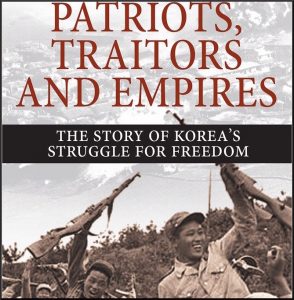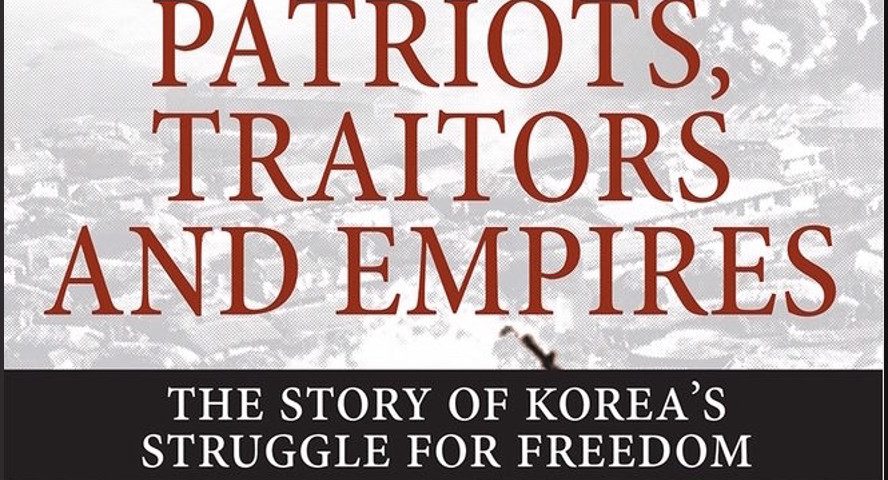A review of Stephen Gowans’ book, Patriots, Traitors and Empires: The Story of Korea’s Struggle for Freedom
by Gregory Elich, originally published on Zoom in Korea, May 7, 2018
The release of Stephen Gowans’s superb new book could not be better timed. With the Korean Peninsula on the potential brink of major change, looking to Western mainstream media for reasoned analysis is a fool’s errand. Gowans provides a valuable service in filling that gap by situating Korea in its historical context, while making no compromise with received opinion or resorting to lazy formulations.
A key to understanding Korea is its experience under harsh colonial rule by the Japanese Empire from 1910 through the end of the Second World War. As was the case elsewhere, some of those under oppression chose to serve power, and others resisted. While Imperial Japan shipped off Koreans as forced laborers throughout its empire and cast women into sexual slavery, a determined resistance movement arose, particularly in Manchuria, where future North Korean leader Kim Il-sung was a prominent guerrilla leader. Many of those who would later fill the ranks of the South Korean government chose a different path, and actively collaborated with the Japanese occupiers.
After the end of the Second World War, the U.S. divided the Korean Peninsula along the 38th Parallel, an act that Gowans points out the Korean people had not asked for. Liberation from Japanese rule, Koreans felt, meant that the country was once again theirs. People’s committees spontaneously sprang up throughout the peninsula, as newly freed Koreans sought to forge their destiny.
The Soviet presence in the north was mostly hands-off, allowing events to unfold unhindered.
It was a different story in the south. U.S. General John R. Hodge, as military governor of South Korea, along with his advisers “drew up a four-point plan to destroy the movement for independence.” The plan called for building up an army and police force to be largely staffed at upper levels by those who had collaborated with Japanese imperialism. Gowans quotes U.S. military sources as describing the Korean police force under Japanese colonial rule as “thoroughly Japanized and efficiently utilized as an instrument of tyranny,” which made these men a natural choice for U.S. occupation authorities to perform the same role in establishing an anti-communist police state. People’s committees were systematically crushed, as tens of thousands of leftists were killed or rounded up and imprisoned. For Koreans in the south, one colonial master had simply been exchanged for another, as it was the U.S. that called the shots. Traitors who had served the Japanese now took orders from the Americans. “By 1950,” Gowans writes, “between 100,000 and 200,000 Korean patriots had been killed by U.S. occupation forces and their Korean subalterns.”
The division of the Korean Peninsula was intended to last no longer than a relatively brief interregnum, but discussions between the U.S. and the Soviet Union on establishing a provisional government went nowhere. Soon the U.S. abandoned any pretense of respecting the agreement on postwar Korea. “An ongoing U.S. presence on the Korean Peninsula,” Gowans observes, “offered too many attractions to Washington to leave Korea to Koreans.” The U.S. proceeded to build a separate government by launching an election process in its occupation zone that was boycotted by a majority. Nevertheless, the U.S. pushed ahead. “Koreans, after all, weren’t the object of the exercise,” Gowans reports. “The building of a global U.S. empire was.” Voting in the south was organized by a police force that was dominated by former Japanese collaborators, along with right-wing thugs. Under the circumstances, the outcome was preordained.
The Soviet Union withdrew its forces on schedule from North Korea in 1948. Decades later, the U.S. military remains firmly ensconced in South Korea, and showing no inclination of ever leaving.
The division of the Korean Peninsula, which most Koreans opposed and few recognized, laid the groundwork for the Korean War. For Koreans, the war was a brutal nightmare made far worse by the U.S. program of total destruction and the aim of annihilating North Korea along with a significant percentage of its population.
South Korea endured long decades under right-wing dictatorship. Gowans is eloquent in describing the harsh realities of life under repression, and this section is one of the book’s many strengths. Through continual struggle, the South Korean people eventually managed to throw off the shackles of dictatorship, yet in many ways, the nation remains subservient to the U.S. That liberation remains to be won.
For more than a century the history of Korea has been a contest between people’s needs and the demands of the powerful. Gowans places Korea in the context of the global struggle for liberation from imperialist domination, a perspective that sheds much light on developments in recent decades.
The analytical framework and information provided by Gowans reveal the basis for U.S.-North Korean animosity and depict a far more complex picture of U.S.-South Korean relations than we customarily encounter. It is fair to say that if all one knows about Korea before coming to this book is from mainstream news, then the reader will come away with a far deeper understanding and appreciation of Korea’s fight for independence and self-determination.
 Stephen Gowans is not a writer to mince words or to defer to mainstream distortions. He makes no concessions to the standard self-serving Western narrative, and this is one of the reasons his work is so consistently refreshing. Gowans is also noted for his careful research and masterly knack for deploying information in support of logical analysis. Patriots, Traitors and Empires is no different in those respects. His book is an impassioned call for justice, imbued with a deeply felt sympathy for the Korean people and their struggle for freedom.
Stephen Gowans is not a writer to mince words or to defer to mainstream distortions. He makes no concessions to the standard self-serving Western narrative, and this is one of the reasons his work is so consistently refreshing. Gowans is also noted for his careful research and masterly knack for deploying information in support of logical analysis. Patriots, Traitors and Empires is no different in those respects. His book is an impassioned call for justice, imbued with a deeply felt sympathy for the Korean people and their struggle for freedom.
Patriots, Traitors and Empires can be ordered from Baraka Books
Schedule for Stephen Gowans’s Book Tour
Follow Stephen Gowans at @GowansStephen
Gregory Elich is on the Board of Directors of the Jasenovac Research Institute and a Korea Policy Institute associate. He is a member of the Solidarity Committee for Democracy and Peace in Korea, a columnist for Voice of the People, and one of the co-authors of Killing Democracy: CIA and Pentagon Operations in the Post-Soviet Period, published in the Russian language. He is also a member of the Task Force to Stop THAAD in Korea and Militarism in Asia and the Pacific.
His website is https://gregoryelich.org
